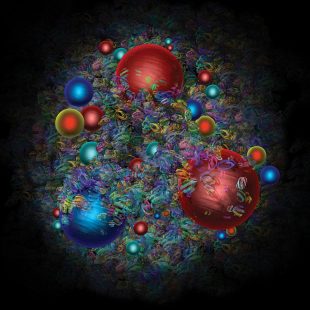In the collisions of protons in the LHC accelerator at CERN, it is not only the up- and down-quarks in the proton that matter, but sometimes heavier quarks such as the strange quark. This is shown by a new analysis of collisions in the ATLAS detector.
The findings of the ATLAS collaboration, which for the Netherlands also includes Nikhef, have been published online. The measurements relate to the distribution of the kinetic energy of a proton over the quarks that make it up. These constituents are called partons. Their distribution is called the parton distribution function or PDF for short.

But in the case of directly colliding protons, there appears to be more to it. In this case, two compound particles hit each other, so it becomes important how the constituents hit each other and how. From two colliding quarks, for example, a Higgs particle can arise, or W- or Z-bosons.
The quantum laws do allow that pairs of heavier quarks and anti-quarks also exist briefly in the proton, but the probability of this is roughly half as small. Theorists at Nikhef are closely involved in such complicated calculations. However, the measurements with ATLAS show that the chance of strange quarks, especially at low proton energy, is somewhat greater than expected.
This is particularly important for understanding the collisions of protons in the LHC and for calculating which new particles can be created when quarks collide. The measured PDFs are the most accurate to date, but according to ATLAS they need to be even better to detect any still unknown particles or deviations from the Standard Model.